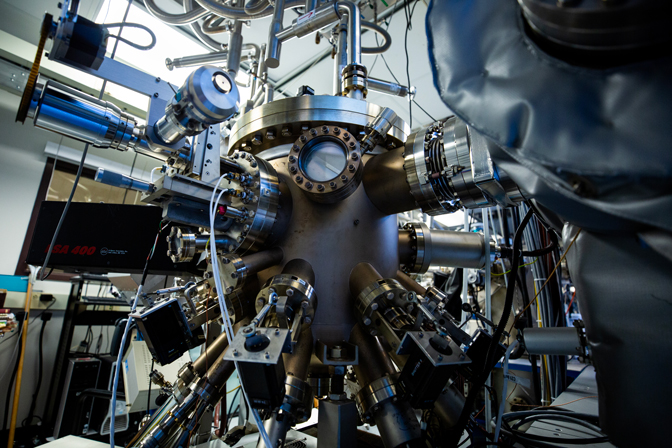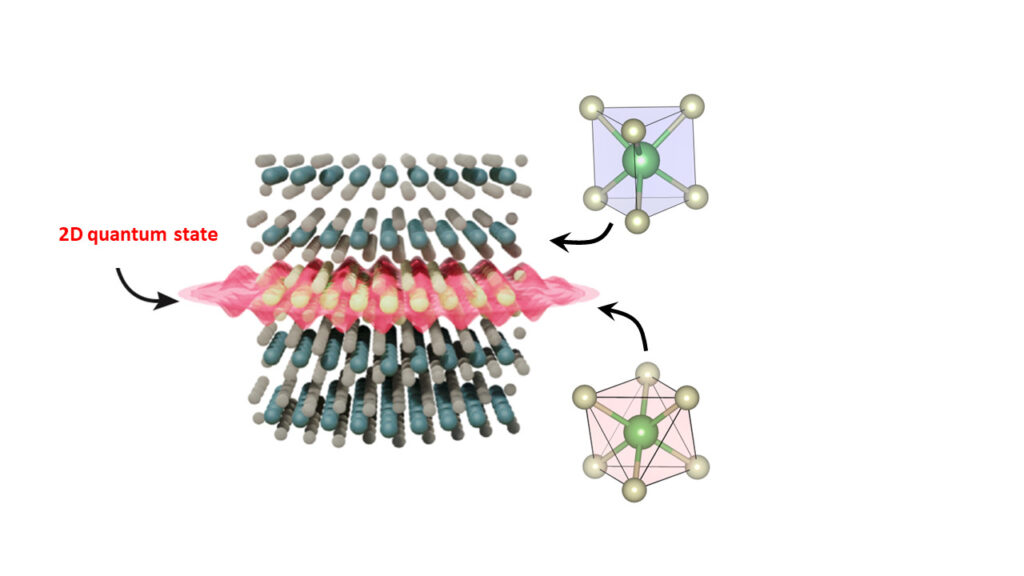
$18M to advance materials research for quantum computing, sustainable plastics and more
New center builds a campus-wide ecosystem for designing and manufacturing materials of the future at U-M while training a more representative workforce.

New center builds a campus-wide ecosystem for designing and manufacturing materials of the future at U-M while training a more representative workforce.
More efficient computing—potentially room temperature quantum computing—and recyclable rigid plastics are two projects to be undertaken by a new materials research science and engineering center at the University of Michigan.
Funded with $18 million from the National Science Foundation, the center seeks to build a campuswide ecosystem of researchers that converge on material solutions to problems facing society. Focusing on the integration of research and education, the center also aims to broaden participation in materials research through year-round opportunities for students and teachers. The center includes researchers from across the U-M campus and from the University of Colorado.

“By the year 2030, IT is expected to utilize 30% of all electrical energy. This is clearly not sustainable,” said Rachel Goldman, U-M professor of materials science and engineering, who leads the new Center for Materials Innovation at Michigan.
“Likewise, we’ve all seen photos of the Great Pacific Garbage Patch—plastics in the ocean. This is, in part, because only some thermoplastics are recyclable. Our center will help address both of these grand challenges.”
The team’s approach to more sustainable computing relates to both conventional and quantum computing. The new materials they propose could reduce the energy costs of both types. In addition, the proliferation of quantum computing would enable some types of problems to be solved in a fraction of the time.
For these purposes, the team will investigate a new class of layered materials in which the atoms in some of the layers are arranged in different crystal structures. Because these special layers are surrounded by layers with the same chemical composition, they are insulated from disturbances. The absence of disorder from their surroundings means these layers have new and enhanced properties that will make both classical and quantum computing more energy efficient.

“The disorder-free layers can for example exhibit stable quantum states at room temperature that will make quantum computing at room temperature a reality. Currently, quantum computing can only take place in refrigerators,” said Ageeth Bol, U-M professor of chemistry, who leads the layered materials project.
The project to develop recyclable, yet strong and rigid plastics will make the hardening process reversible. Currently, the ‘hardener’ molecules that connect strands of molecules into crosslinked networks, as in epoxy, won’t come undone. Instead, the team envisions crosslinks that can be reversed using heat or light. These new materials would match the strength of current crosslinked polymers, but they could be reshaped and repurposed on demand, and they would possess self-healing ability.
“A repair would not just be a patch—it would reconstitute the material to its original molecular structure. That would extend the lifetime of the structure and reduce the amount of material that has to be discarded,” said John Kieffer, U-M professor of materials science and engineering, who leads the sustainable plastics project.
As an example, Kieffer named wind turbine blades that could be repaired when cracks develop and then recycled at the end of their useful lives. Plastics like these would also be useful in space, where they could be sent up in a compact package and then built into large structures that could be reconfigured as needed. The team anticipates that beyond recycling and reuse, these networks could be designed for regulating materials properties when needed—for instance, to dissipate the blow on impact or vary heat transmission to prevent overheating.
Beyond technology development, the center is seeking to create an opportunity pathway for students with identities that are often excluded from science and engineering. The center will recruit researchers from high schools and higher ed institutions that serve economically disadvantaged and underrepresented communities, working in collaboration with the Detroit-based University of Michigan Center for Innovation and the Michigan Engineering Zone.
The center will also offer summer workshops for high school teachers to fulfill continuing education requirements, training them in teaching methods that bring cutting edge materials science and chemistry into their classrooms. Similarly, the center will help train graduate students and postdoctoral researchers as the next generation of science and engineering research mentors.
Goldman is also a professor of physics and associate director of applied physics. Bol is also a professor of materials science and engineering.